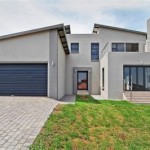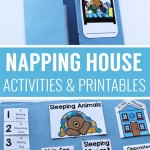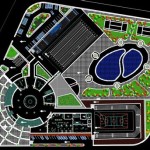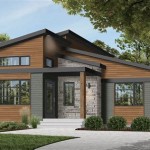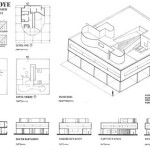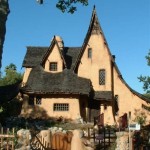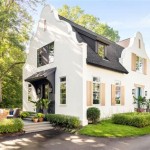Handicap Guest House Plans
Building a handicap-accessible guest house presents a unique opportunity to combine hospitality with inclusive design. Careful planning ensures a comfortable and safe environment for guests with mobility challenges. This article explores key considerations when designing and building such a space.
Accessibility Regulations and Standards
Adhering to established accessibility guidelines is paramount. These standards provide minimum requirements for various aspects of design and construction. Consulting local building codes and the Americans with Disabilities Act (ADA) is essential before embarking on any project. Key areas covered by these regulations include:
- Ramp slopes and dimensions
- Doorway widths and thresholds
- Bathroom fixtures and grab bar placement
- Clearance space for maneuvering wheelchairs
- Accessible routes and pathways
Floor Plan Design for Optimal Accessibility
The layout of the guest house plays a crucial role in ensuring ease of movement and access. An open floor plan minimizes obstacles and facilitates navigation. Key considerations include:
- Wide hallways and doorways: Allowing ample space for wheelchair users to maneuver comfortably.
- Step-free entrances and exits: Eliminating steps and incorporating ramps with gentle slopes.
- Single-story design: Avoiding stairs whenever possible simplifies accessibility.
- Strategic furniture placement: Ensuring sufficient space between furniture pieces for easy movement.
Bathroom Design for Accessibility and Safety
The bathroom is a critical area for accessibility modifications. Careful planning can greatly enhance usability and safety for guests with disabilities. Key features include:
- Roll-in showers: Providing a level entry for easy access with a wheelchair.
- Grab bars: Strategically placed grab bars near the toilet, shower, and sink offer support and stability.
- Adjustable showerheads: Allowing users to customize the height and angle of the water stream.
- Lowered sinks and countertops: Facilitating access for wheelchair users.
- Wider doorways and turning radius: Ensuring ample space for maneuvering within the bathroom.
Kitchen Adaptations for Enhanced Usability
Adapting the kitchen to accommodate guests with mobility challenges can significantly enhance their independence and comfort. Key modifications include:
- Lowered countertops and cabinets: Providing easy access for wheelchair users.
- Knee space under the sink and cooktop: Allowing for closer access.
- Side-opening ovens and microwaves: Facilitating access for individuals with limited reach.
- Lever-style faucet handles: Easier to operate than traditional knobs.
Bedroom Accessibility Features
Creating a comfortable and accessible bedroom environment is crucial for ensuring a restful stay. Key considerations include:
- Ample space around the bed: Allowing for easy transfer from a wheelchair.
- Adjustable bed height: Customizing the bed height to accommodate individual needs.
- Accessible closet and storage solutions: Providing easy access to clothing and personal belongings.
- Light switches and electrical outlets within reach: Minimizing the need for excessive reaching.
Exterior Accessibility Considerations
Accessibility extends beyond the interior of the guest house. The exterior environment should also be designed with accessibility in mind. Key features include:
- Ramps leading to entrances: Providing a smooth and gradual incline.
- Designated accessible parking spaces: Located close to the entrance with ample space for maneuvering.
- Well-lit pathways: Ensuring safe navigation at night.
- Level or gently sloping terrain: Minimizing obstacles and facilitating movement.
Choosing Appropriate Building Materials and Finishes
Selecting appropriate building materials and finishes can further enhance accessibility and safety. Key considerations include:
- Non-slip flooring: Reducing the risk of falls, especially in wet areas like bathrooms and kitchens.
- Lever-style door handles: Easier to operate than traditional doorknobs.
- Smooth transitions between flooring surfaces: Minimizing tripping hazards.
- Durable and easy-to-clean surfaces: Simplifying maintenance and upkeep.
Smart Home Technology for Enhanced Accessibility
Integrating smart home technology can significantly improve accessibility and independence for guests with disabilities. Key features include:
- Voice-activated controls for lighting, temperature, and appliances: Reducing the need for physical interaction.
- Automated door openers: Facilitating entry and exit for individuals with limited mobility.
- Remote-controlled window coverings: Providing easy adjustment of natural light.
- Smart security systems: Enhancing safety and peace of mind.

Exclusive Wheelchair Accessible Cottage House Plan 871006nst Architectural Designs Plans

Plan 8423jh Handicapped Accessible Split Bedroom Southern House Plans Floor

Accessible Handicap House Plans Style Results Page 1

Medcottage Grand Floor Plan 600 Sf Wheelchair Accessible Plans Guest House

Plan Type Gothic Revival Bedroomsbathrooms Floor Accessible House Plans Small Guest

Wheelchair Accessible Small House Plans Drummond

Exclusive Wheelchair Accessible Cottage House Plan 871006nst Architectural Designs Plans

Small Space Accessibility Accessible Homes House Plans Design

Wheelchair Accessible Small House Plans Drummond

798 Sq Ft Wheelchair Accessible Small House Plans Tiny

